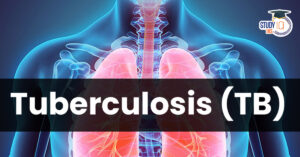Context: Since 2020, a highly pathogenic avian influenza, H5N1, has been affecting birds worldwide, with more than 80 countries reporting infections as of December 2023.
Highly pathogenic avian influenza (HPAI) H5N1 strain has been affecting cattle across several States in the U.S. and has also resulted in human infections in dairy farm workers.
What is Bird Flu?
- Bird flu or avian influenza primarily infects poultry and wild birds, with strains like H5N1 becoming highly pathogenic when they jump from wild birds to farmed birds.
- The H5N1 strain originated from a virus on a goose farm in Guangdong, China, in 1996, killing over 40% of the infected farm birds.
Outbreak of New H5N1 Virus Variant
- The new H5N1 variant emerged in Europe in 2020, spreading to Africa, Asia, and then to North America by late 2021 and South America by fall 2022.
- Millions of chickens and turkeys have been culled on poultry farms to prevent the spread, and thousands of wild birds like gulls and terns have died.
- Antarctica has reported its first bird flu case (Feb. 2024).
Spreading of H5N1 Virus Beyond Birds
Worryingly, the H5N1 virus is jumping to mammals, including:
- Seals and sea lions (tens of thousands dead worldwide)
- Foxes, pumas, skunks, bears (North America)
- Farmed minks (Spain and Finland)
We’re now on WhatsApp. Click to Join
Details about H5N1 Virus (Avian Influenza)
| Aspect |
Details |
| Danger and Transmission |
- H5N1 emerged in 1996 and has caused the deaths of billions of wild birds and fowls.
- The virus has jumped to 26 mammalian species, including cattle, and has now been proven to infect humans.
- Herd-to-herd transmission in the U.S. spans 12 states, with the virus detected in raw milk and milking machines.
- Scientists note that the virus currently lacks changes for efficient human-to-human transmission, keeping the risk to human health low, though it may evolve.
|
| Risk to Humans |
- Considered low currently due to lack of adaptation for human-to-human transmission.
- The potential for rapid evolution and spread raises concerns of future pandemics.
- Higher risk in regions with close human-animal contact (e.g. Alappuzha, India).
- Between 2003 and April 2024, nearly 900 human infections were reported globally, with over half being fatal.
|
| Symptoms and Precautions |
- H5N1 symptoms resemble those of influenza-A, including respiratory issues, fever, cough, sore throat, and pneumonia.
- Conjunctivitis (often called “pink eye”) was the only symptom reported in one U.S. farm worker.
- The Center for Disease Control and Prevention (CDC) advised clinicians to consider H5N1 in patients with respiratory illness or conjunctivitis if exposed to livestock or dead birds.
- In Kerala, mass culling of birds is the primary containment strategy. The mass death of crows suggests the infection might have spread beyond current surveillance zones.
- Continuous surveillance, including testing environmental and human samples, is necessary.
|
| Necessary Precautions |
- People in affected areas are advised to wear masks and take antiviral Tamiflu as prophylaxis.
- Avoid unprotected exposure to infected birds or animals and their environments.
- Monitor for respiratory illness symptoms, including conjunctivitis, for 10 days after potential exposure.
- Use only pasteurised milk and ensure poultry meat and eggs are well-cooked.
|
| Response and Coordination |
- The Lancet emphasises the need for a robust, coordinated response to H5N1, advocating for the ‘One Health’ approach.
- Kerala has implemented the ‘One Health’ concept as part of the World Bank-aided ‘Rebuild Kerala’ project in Alappuzha, Pathanamthitta, Kottayam, and Idukki.
- A community-based disease surveillance network with 250,000 volunteers trained in the ‘One Health’ concept reports unusual events or animal/bird deaths for early preventive measures.
|
Impact of H5N1 Virus (Avian Influenza)
- Wild birds:
- Over 150 wild bird species are infected globally.
- At least 6% of endangered California condors died in 2023.
- The Svalbard Barnacle Geese population was significantly impacted.
- Marine mammals:
- Over 20,000 sea lions and some dolphins died in Chile and Peru.
- Thousands of elephant seals died in Argentina.
- 95% of Southern elephant seal pups died in Patagonia (South America) in late 2023.
- In Humans:
- Low risk of transmission to humans (mostly through close contact with infected birds).
Avian Influenza in India
Avian influenza A (H5N1), commonly known as highly pathogenic avian influenza (HPAI) or bird flu, has been present in India since 2006. Initially affecting birds, it has since 2003 also been found in mammals, leading to widespread outbreaks. From 2020 to 2023, poultry in 15 states, including Maharashtra, Punjab, Kerala, and the National Capital Region, experienced outbreaks of both H5N1 and H5N8.
In January and February 2021, Haryana witnessed an outbreak of H5N8 in Panchkula district, causing significant harm to the local poultry industry. While the virus has not yet developed the capability for efficient human-to-human transmission, individuals infected in affected areas could potentially spread the virus internationally through travel.
The H5N1 influenza virus poses a significant risk of rapid spread. A 2024 study suggests that the outbreak in Andhra Pradesh could potentially trigger the next global pandemic.
Reasons Behind Large-Scale Spread of H5N1 Virus (Theories)
| Reasons |
Details |
| Climate change |
- May alter bird behaviour, leading to increased interaction between species and wider viral spread.
- Warmer sea temperatures might weaken marine mammals, making them more susceptible.
|
| Bird Migration |
- Migratory birds, particularly waterfowl, carry H5N1 over long distances.
- Birds may carry the virus asymptomatically, making detection and control challenging.
|
| Poultry Trade and Transport |
- Global trade and movement of live poultry and poultry products contribute to spread.
- Infected birds or contaminated materials introduce the virus to new areas, especially with inadequate biosecurity measures.
|
| Human Activities and Interactions |
- Travel, trade, and agricultural practices inadvertently spread the virus.
- Poor hygiene practices in poultry farms and live bird markets facilitate transmission.
|
| Viral Evolution and Adaptation |
- Genetic mutations and reassortment change virulence, transmission, and host range.
- Evolutionary processes can enhance the virus’s ability to spread among birds and occasionally to humans.
|
| Environmental Factors |
- Temperature, humidity, and ecosystem changes influence virus survival and transmission.
- Certain environmental conditions favor H5N1 persistence and spread among bird populations.
|
| Biosecurity Measures |
- Inadequate practices in poultry farms and wet markets increase H5N1 transmission risk.
- Poor biosecurity facilitates easy virus spread among birds and potential transmission to humans.
|
| Wildlife Reservoirs |
- Wild birds and wildlife maintain H5N1 presence, even with domestic bird culling or vaccination.
- Contact between wild and domestic birds leads to virus spillover into poultry populations.
|
Sharing is caring!


 AI and its Regulation in India, Limitati...
AI and its Regulation in India, Limitati...
 Tuberculosis (TB), Symptoms, Causes and ...
Tuberculosis (TB), Symptoms, Causes and ...
 Places in News for UPSC 2025 for Prelims...
Places in News for UPSC 2025 for Prelims...





















